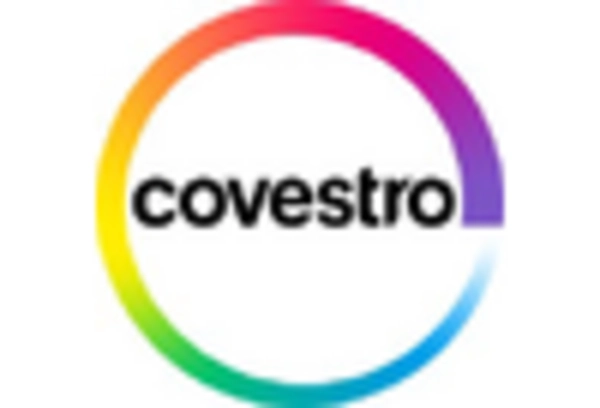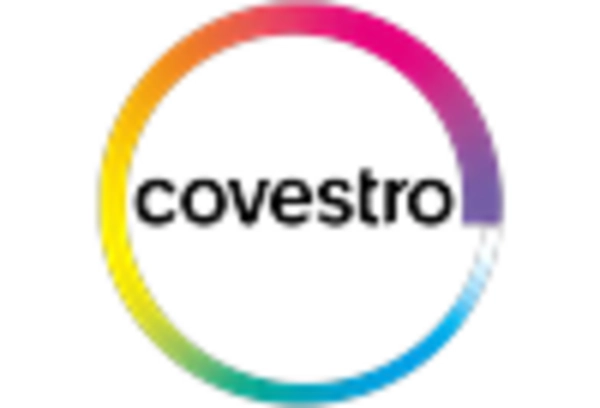Regulatory Compliance
Regulatory compliance is a critical driver influencing the Plastics in Electrical and Electronic Market. Governments worldwide are implementing stringent regulations regarding the use of hazardous substances in electronic products, such as the Restriction of Hazardous Substances (RoHS) directive. Compliance with these regulations necessitates the adoption of safer plastic materials, which can lead to increased production costs. However, companies that proactively adapt to these regulations can benefit from enhanced market access and consumer trust. The demand for compliant materials is expected to rise, with the market for non-toxic plastics projected to grow by 12% annually. This regulatory landscape compels manufacturers to innovate and invest in safer alternatives, ultimately shaping the future of the industry.
Sustainability Initiatives
The increasing emphasis on sustainability within the Plastics in Electrical and Electronic Market is driving innovation and adoption of eco-friendly materials. Manufacturers are increasingly focusing on biodegradable and recyclable plastics to meet regulatory requirements and consumer preferences. This shift is evidenced by the rise in demand for bioplastics, which is projected to grow at a compound annual growth rate of 15% over the next five years. Companies are investing in research and development to create sustainable alternatives that do not compromise performance. As a result, the industry is witnessing a transformation in product design and manufacturing processes, aligning with global sustainability goals. This trend not only enhances brand reputation but also opens new market opportunities for companies that prioritize environmental responsibility.
Technological Advancements
Technological advancements are significantly impacting the Plastics in Electrical and Electronic Market, driving efficiency and performance improvements. Innovations in polymer science and processing technologies are enabling the development of high-performance plastics that meet the demanding requirements of modern electronics. For instance, advancements in injection molding and extrusion techniques are allowing for more complex designs and reduced production times. The market for advanced plastics is expected to witness a growth rate of 10% over the next five years, as manufacturers seek to leverage these technologies to enhance product quality and reduce costs. This continuous evolution in technology not only fosters competitiveness but also encourages the adoption of new materials and processes within the industry.
Smart Technology Integration
The integration of smart technologies into the Plastics in Electrical and Electronic Market is reshaping product functionalities and consumer experiences. The proliferation of the Internet of Things (IoT) has led to an increased demand for smart devices that utilize advanced plastics for enhanced performance and durability. For instance, plastics with embedded sensors are becoming commonplace in consumer electronics, enabling real-time data collection and connectivity. This trend is expected to drive the market for smart plastics, which is anticipated to reach a valuation of USD 30 billion by 2026. As manufacturers seek to differentiate their products, the incorporation of smart features is likely to become a key competitive advantage, further propelling growth in the industry.
Customization and Specialization
Customization and specialization are emerging as pivotal drivers in the Plastics in Electrical and Electronic Market. As consumer preferences evolve, manufacturers are increasingly offering tailored solutions that meet specific needs. This trend is particularly evident in sectors such as automotive and consumer electronics, where unique plastic formulations are developed to enhance product performance. The market for specialized plastics is projected to grow significantly, with an estimated CAGR of 8% over the next five years. Companies that invest in advanced manufacturing techniques, such as 3D printing, are likely to gain a competitive edge by providing bespoke solutions that cater to niche markets. This focus on customization not only enhances customer satisfaction but also fosters innovation within the industry.























Leave a Comment